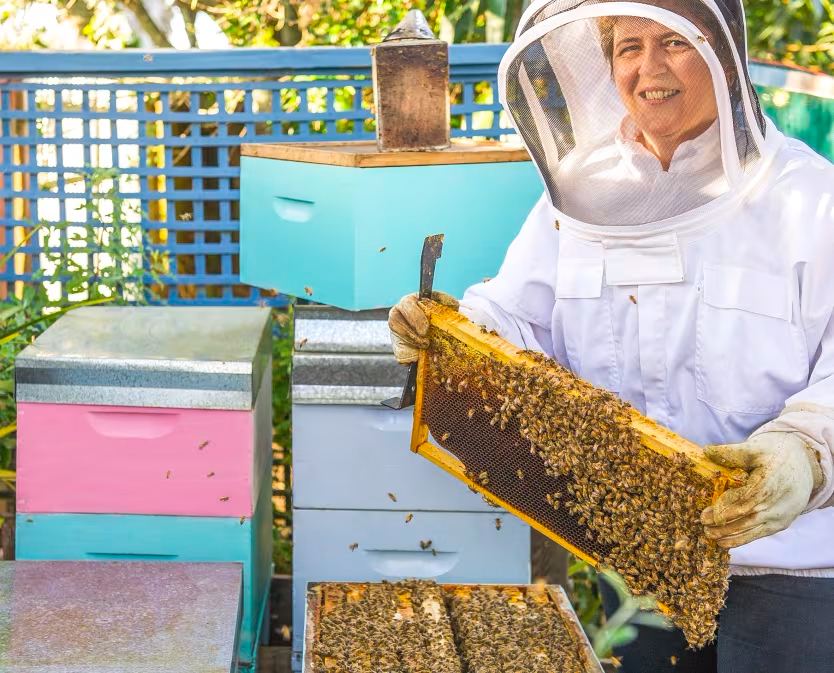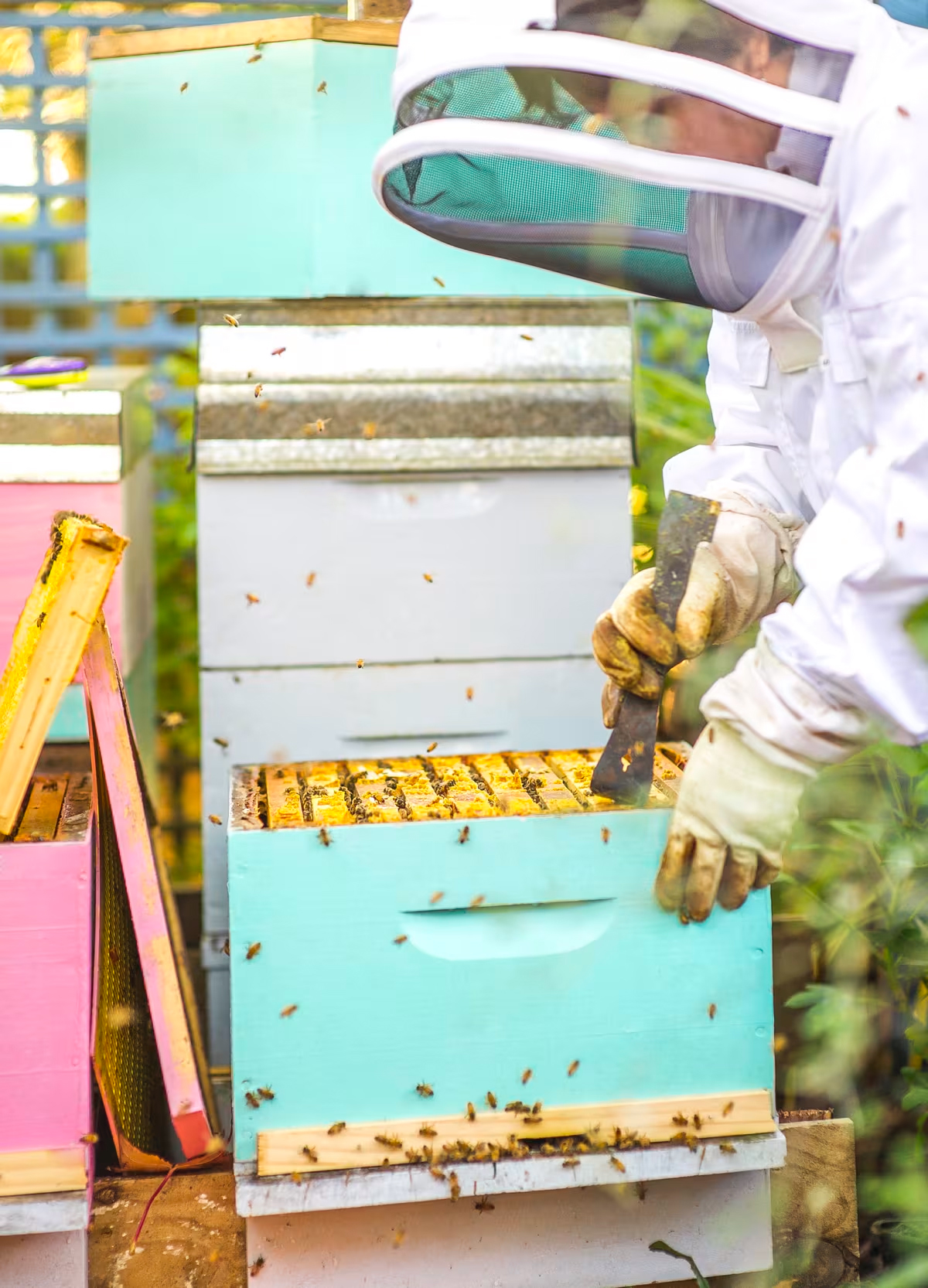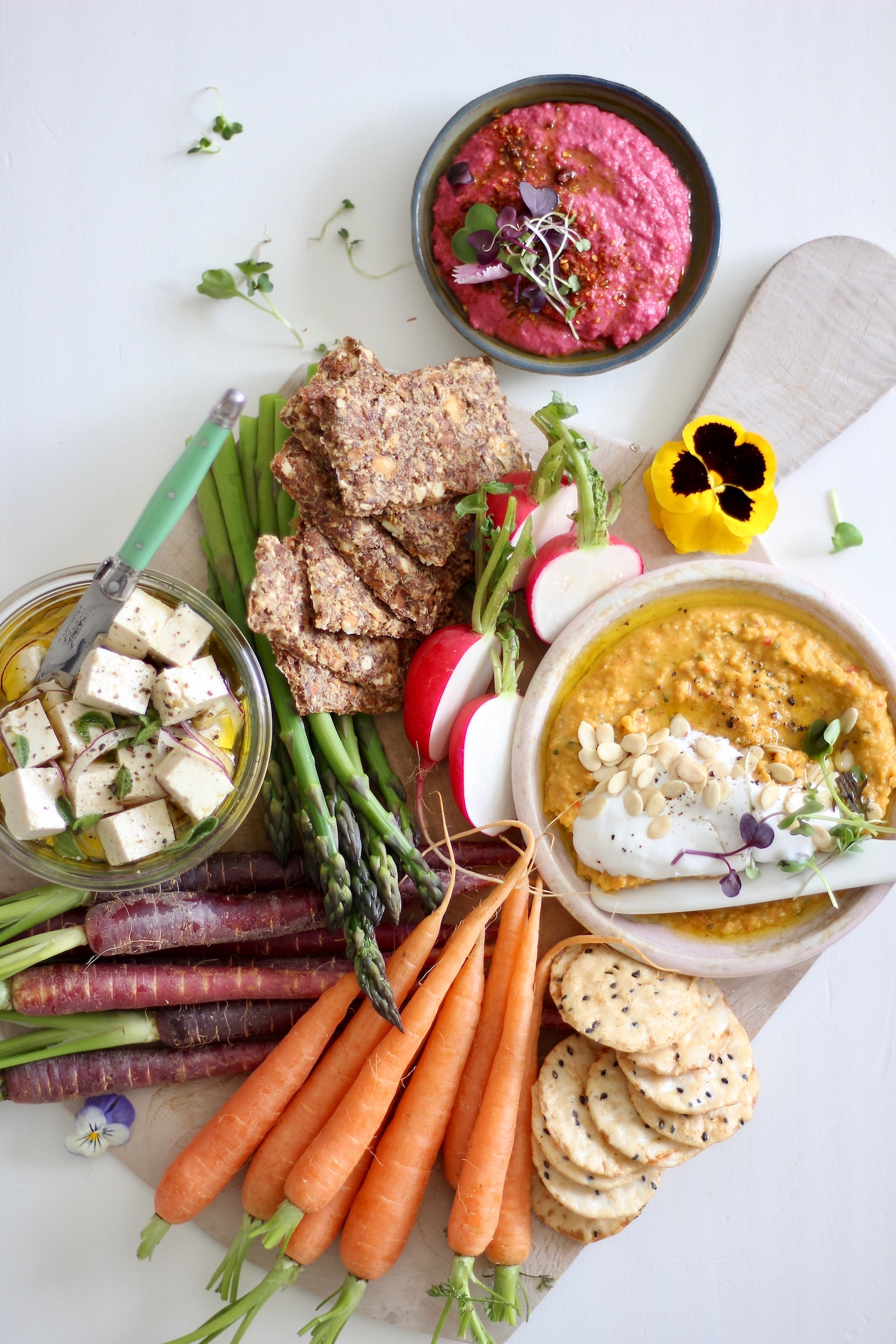Styling, words and photography by Sarah Heeringa.
September is Bee Aware Month, and beekeepers are calling on bee lovers throughout New Zealand to learn more about this incredible species and their contribution to our environment, food chain and economy. Click here to learn more about Bee Aware Month.
Bees play an essential role in feeding the world, with around one third of the food we consume reliant on pollination by bees as well as other insects, birds and bats.
New Zealand has 28 native bee species who don’t produce honey but are vital pollinators, especially of natives such as mānuka, kānuka and pōhutukawa.
Honeybees are not native to these islands. Mary Bumby, the sister of a Methodist missionary, is thought to have introduced the first honeybees when she brought two hives ashore after landing at the Mangungu Mission Station at Hokianga, in 1839.
Simple ways to make your garden welcoming to bees and other pollinators is to avoid using sprays, plant lots of different flower types and let plants go to seed.
Not everyone has a garden with room for a beehive, but if space allows you can enjoy the satisfaction of hosting a hive, lots of honey and the bonus of their pollinating work in your garden and around the neighbourhood.
You can also landscape your bee garden using paint and plants. Bees can see ultraviolet light, which means colours look different to them and they can see things we cannot see. Bees can see patterns on flowers that are invisible to the human eye, but which help them to find nectar. They use scent, rather than sight, to find flowers from a distance. Closer up, colours likely to attract bees are purple, violet and blue, say scientists.
Bees don’t like dark colours, especially red or black. So instead of a dark garden fence, I chose Resene Liberty with its muted blue tone. Resene Lumbersider is a waterborne low-sheen paint, which provides maximum durability for outdoor conditions, while also being non-toxic and low VOC for the bees.
Meanwhile the beehives were painted in the fresh green of Resene Freelance and bright Resene BFF.
You will need
· 1 litre each of Resene Lumbersider waterborne low sheen in Resene Freelance and Resene BFF
· Wide paint brushes
· Bee suit for wearing while painting
· A selection of bee-friendly plants

Bee-friendly plants
· Annuals: calendula, zinnias, marigold, sunflowers, poppies, cosmos, hollyhocks, foxgloves, echium, nasturtiums
· Perennials: comfrey, dahlias, echinacea, geraniums, aquilegia, gladiolus
· Natives: mānuka, kowhai, pōhutukawa, rata, hebe, hoheria, cabbage tree, flax
· Climbers: honeysuckle, wisteria, clematis, star jasmine
· Fruit and vegetables: brassicas, beans blackberry, cucumbers, pumpkin, courgette
· Herbs: basil, fennel, borage, rosemary, sage, thyme, parsley
· Useful weeds: clover, dandelion, chickweed








